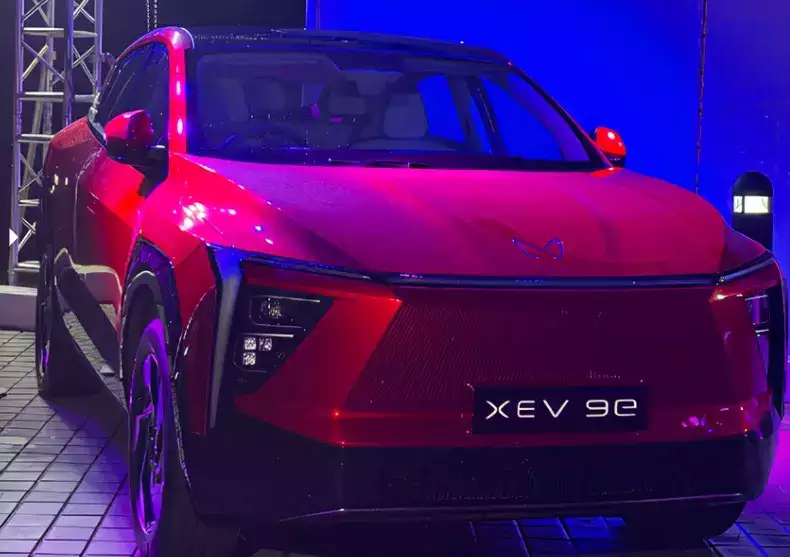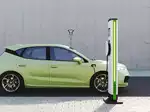Mahindra conducts India's first live EV crash test on XEV 9e

Crash test depicting strong safety standards
The XUV 9e underwent a frontal 40% offset deformable barrier crash test at 64 km/h. This specific test simulates a common type of real-world collision. The company also subjected the vehicle's battery to a series of rigorous tests, including nail penetration, fire resistance, and a crush test.
The crash test revealed that the XUV 9e's airbags deployed correctly, and the occupant cage remained intact. This signifies the vehicle's ability to protect passengers in a collision. Mahindra also highlighted the performance of the eSUV’s advanced safety features during the test.
Battery safety
Mahindra emphasized the resilience of the XUV 9e’s battery through a series of demanding tests. These tests aimed to demonstrate the battery's safety and durability in extreme scenarios.
Nail penetration test: "A live battery Cell was subjected to a nail penetration test, proving it can withstand physical damage without catastrophic consequences,” stated the company. This test demonstrated the battery's ability to withstand penetration without causing a major safety hazard.
Fire resistance test: "Mahindra today exposed a fully charged battery to open fire, confirming it maintains structural integrity and does not lead to Fire or explosion under extreme temperatures,” stated the company. The fire resistance test proved the battery's capacity to withstand extreme heat without catching fire or exploding.
Crush test: "In a dramatic demonstration, a 22-tonne truck was driven over a live battery pack. Despite the severe abuse, the battery retained its structural integrity, electrical function, and charging capability,” stated the company. The crush test involved driving a 22-tonne truck over a live battery pack. This extreme test demonstrated that the battery could maintain its structural integrity and functionality even under immense pressure.
Mahindra stated that with these rigorous tests, it aims to set new safety standards in the automotive industry. The company positions the XUV 9e, along with the BE.06, as embodying its vision for safe and sustainable mobility.
Mahindra has reaffirmed its commitment to exceeding global safety standards in its vehicle engineering. The company’s Passive Safety Lab in Tamil Nadu, where these tests were conducted, is one of the largest OEM-owned facilities of its kind globally. This further emphasizes Mahindra's dedication to safety and research in the EV segment.

